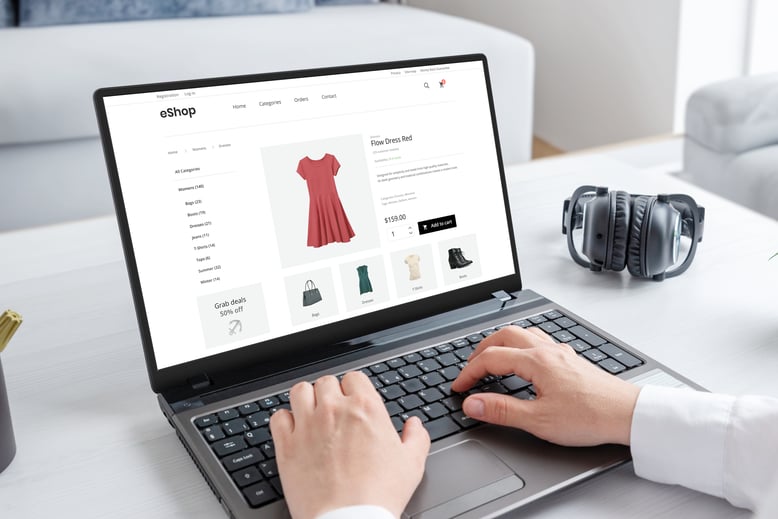
Sometimes, the hardest part of running an ecommerce operation isn’t just getting initial traffic to your online store. In reality, the first visit might seem hard to achieve — but getting them to come back can be just as hard. This is especially true when you’re combating specific forms of page abandonment.
For example, ecommerce stores often fight page abandonment related to abandoned carts and browsing specific products without moving through the checkout flow. Even when factoring for first-time versus repeat visitors, learning how to use retargeting to bring previous visitors back and specifically getting them to become customers can be a serious challenge.
Retargeting Explained
Retargeting might sound like a complex concept, but in reality it’s fairly straightforward. All this term means is that you’re re-engaging a consumer that previously visited your website by paying attention to insights gleaned from their previous session. In the two main formats listed above — abandoned cart and browsing history — there’s plenty of information you can digest from a previous session to ideally lure a customer back and encourage them to complete the customer flow.
But it’s important to add that in today’s data privacy-focused landscape, to play it safe it’s better to rely on “remarketing” rather than “retargeting.” Both refer to the same activities, but the data source is what makes the difference. While it all can sound like technicalities, retargeting tends to refer to using third-party cookies which are almost always on the naughty list for data privacy advocates. Meanwhile, remarketing means that if you’re using cookies, they’re the first-party kind and are deemed okay to use.

Why Retargeting Fell Out of Favor
These days, cookie restrictions have gotten tighter thanks to data privacy regulations from around the world like GDPR and CCPA. In particular, third-party cookies are in the crosshairs. A good example of third-party cookies includes using ad networks to display ads to previous visitors, or even cookie data sharing coming from outside sources such as social media platforms.
However, if you’re relying on first-party cookies that originate on your website as opposed to third-party ones coming from other vendors, you can still leverage cookies to retarget visitors. First-party cookies are usually categorized as “essential” or “necessary”. These can include everything from allowing a website to remember login details for returning users to even populating shopping carts with previously added items as a visitor shifts between pages.
Leveraging Cookies and Data Collection For Remarketing
As mentioned earlier, cookies are still central to ecommerce stores. These data trackers are activated at the start of a web visitor’s session to a specific website and follow their activity until they leave. This can include tracking geolocation, the pages and/or products they interacted with, and even potentially — depending on whether they were using private or regular browsing features — general details regarding the browser they used, the device used to access the internet, and even timestamps for any tracked activity.
This information can be essential in using two main outreach solutions to lure consumers back to your website especially if you’re combating page or cart abandonment. While traditional remarketing often relies solely on email marketing, there are on-platform solutions that can create alternative on-site remarketing modalities.
The Reminder Email
Assuming you have a web session from a visitor that is logged in through an active account with your ecommerce store, the reminder email is a great way to lure previous customers back to your website. That email might simply remind consumers of the products they viewed previously — and as an added hook — include a time-sensitive discount code to encourage them to check out by a specific deadline (i.e. 24 or 48 hours).
The Segmented Follow Up Email
This might sound similar to the reminder email, but it’s slightly different as this time, you’re targeting consumers that previously shopped with you under specific circumstances. Maybe you have a trigger designed to send this email within a set time from when the last order was placed. It might thank customers for their purchase, offer a discount towards a future order, and even highlight best sellers from your product catalog.
Alternatively, follow up emails can also be triggered if a customer account has gone dormant. For example, if it’s been over a month since a specific customer browsed your website, you might send them an email inviting them back with a time-sensitive discount towards their next order, highlighting new arrivals, or even current bestsellers.
The Targeted Pop-Up or Suggested Products Flow
Maybe you create a time-bound trigger that automatically displays previously viewed items when a visitor has spent a certain amount of time on your website without adding items to the cart. If you have a dynamic plug-in or API installed on your website that can display popular products or be adjusted to display items previously viewed, this is a great way to encourage a visitor to revisit a page and ideally pull the trigger to add it to their cart or increase the total cart value.
Meanwhile, targeted pop-ups can include offering discounts to first-time email subscribers, time-sensitive free shipping for orders, or even creating a sense of urgency by putting a time limit for how long select items will remain in a shopper’s cart before the cart is cleared.

Leverage the Tools You Have for Better Conversions
In truth, most online stores that are hosted on platforms like Shopify, WooCommerce, GoDaddy, and even Wordpress have internal mechanisms in place to support remarketing. This includes both email marketing outreach and on-page targeting thanks to plug-ins that leverage cookies originating on your website.
However, if marketing isn’t your strong suit, having an experienced professional help you build a powerful lead generation and conversion tool that consistently shifts casual visitors into the confirmed shopper category is going to be important. The Creative Momentum is well-versed in these activities with a track record of helping ecommerce clients increase revenue by not just attracting new eyes to their website, but leveraging the users that are already there. If you’re ready to kickstart your on-site marketing strategy to boost revenue, contact us today.


